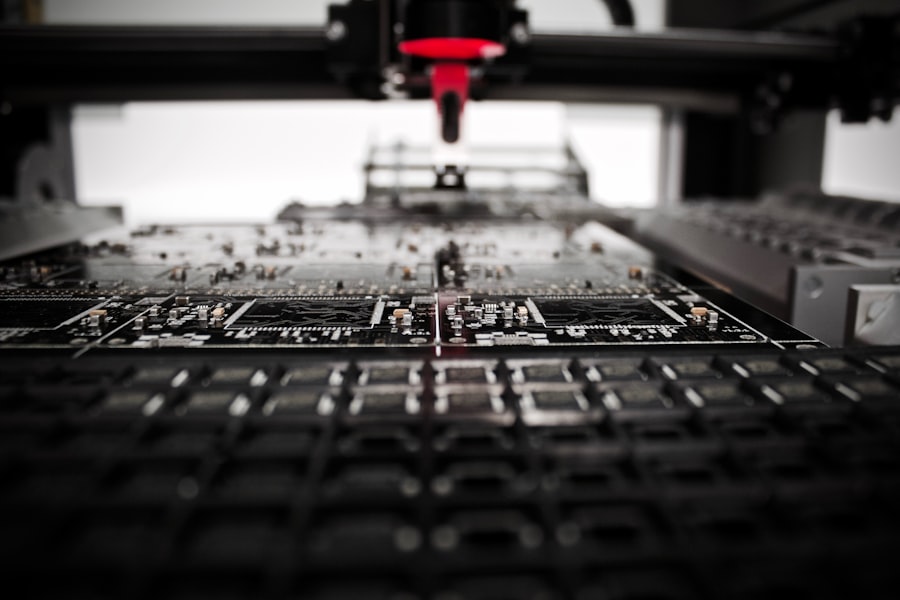In the realm of 3D printing, the efficiency of a glue stick can significantly influence the success of a print job. The primary function of a glue stick is to enhance adhesion between the print material and the build plate, which is crucial for preventing warping and ensuring that the first layers of a print adhere properly. When a print fails to stick, it can lead to a cascade of issues, including misalignment, uneven layers, and ultimately, a complete print failure.
Therefore, understanding how to utilize glue sticks effectively is essential for both novice and experienced 3D printing enthusiasts. Moreover, the efficiency of a glue stick can vary based on several factors, including the type of filament being used, the temperature of the build plate, and even environmental conditions such as humidity. For instance, materials like PLA may require different adhesive properties compared to ABS or PETG.
A glue stick that works well for one type of filament may not provide the same level of adhesion for another. This variability underscores the importance of selecting the right glue stick and applying it correctly to achieve optimal results in 3D printing.
Key Takeaways
- Glue stick efficiency is crucial for successful 3D printing as it ensures proper adhesion between the build plate and the printed object.
- Choosing the right glue stick for your build plate material is essential for achieving optimal adhesion and preventing warping or lifting during printing.
- Applying the glue stick in a thin, even layer across the build plate surface is the most effective manner to ensure proper adhesion without excess residue.
- Proper build plate preparation, such as cleaning and roughening the surface, is key to maximizing adhesion and preventing print failures.
- Regular maintenance and cleaning of the build plate is necessary for long-lasting glue stick efficiency and consistent adhesion for 3D printing.
Choosing the Right Glue Stick for Your Build Plate
Selecting the appropriate glue stick is a critical step in ensuring successful adhesion during 3D printing. Not all glue sticks are created equal; they come in various formulations designed for different applications. For example, some glue sticks are designed specifically for use with paper and may not provide the necessary adhesion for plastic filaments.
Conversely, there are glue sticks formulated for crafting that may offer better performance on a variety of surfaces, including glass and metal build plates. When choosing a glue stick, it is essential to consider the material of your build plate as well. For instance, if you are using a glass build plate, a washable glue stick can be particularly effective because it can be easily removed after printing without leaving residue.
On the other hand, if you are working with a textured or PEI-coated build plate, you might want to opt for a stronger adhesive that can withstand higher temperatures and provide better grip. Additionally, reading reviews and seeking recommendations from fellow 3D printing enthusiasts can help you identify which glue sticks have proven effective for specific materials and setups.
Applying the Glue Stick in the Most Effective Manner

The application technique of a glue stick can greatly impact its effectiveness in promoting adhesion. A common mistake among beginners is applying too much glue, which can create a slippery surface that hinders proper adhesion. Instead, a thin, even layer is recommended to ensure that the filament has enough surface area to bond without creating excess moisture that could interfere with the printing process.
A simple swipe across the build plate with the glue stick can often suffice; however, it’s important to ensure that the entire area where the print will be placed is covered. In addition to the amount applied, the timing of application is also crucial. Applying the glue stick too far in advance can lead to drying out or becoming less effective by the time printing begins.
Ideally, you should apply the glue stick just before starting your print job. This ensures that the adhesive remains tacky enough to provide optimal grip when the filament is extruded onto the build plate. Furthermore, some users find that lightly moistening the glue stick before application can enhance its adhesive properties, allowing for better bonding with various filament types.
Maximizing Adhesion with Proper Build Plate Preparation
| Build Plate Preparation | Adhesion |
|---|---|
| Clean the Build Plate | Improved |
| Apply Adhesive Solution | Enhanced |
| Level the Build Plate | Optimized |
| Use Proper Build Plate Temperature | Maximized |
Before applying any adhesive, proper preparation of the build plate is paramount for maximizing adhesion. A clean surface free from dust, grease, or previous residues will significantly improve the effectiveness of any glue stick used. Cleaning agents such as isopropyl alcohol or specialized build plate cleaners can be employed to ensure that all contaminants are removed.
It’s advisable to wipe down the build plate thoroughly and allow it to dry completely before proceeding with glue application.
Many filaments benefit from a heated build plate, which helps to keep them warm and pliable during printing.
For instance, setting your build plate temperature to around 60°C for PLA or 100°C for ABS can create an environment conducive to better adhesion. The heat helps to soften both the filament and the glue stick slightly, allowing them to bond more effectively during the initial layers of printing.
Maintaining and Cleaning the Build Plate for Long-lasting Glue Stick Efficiency
To ensure long-lasting efficiency from your glue stick application, regular maintenance and cleaning of your build plate are essential practices. Over time, residues from previous prints or adhesive applications can accumulate on the surface, leading to diminished adhesion quality. A routine cleaning schedule should be established based on your printing frequency; for instance, cleaning after every few prints or at least once a week can help maintain optimal conditions.
When cleaning your build plate, it’s important to use appropriate materials that won’t scratch or damage its surface. For glass plates, a soft cloth or sponge with mild soap and water is usually sufficient. For textured surfaces or PEI sheets, gentle scrubbing with isopropyl alcohol can effectively remove residues without causing harm.
After cleaning, always ensure that the surface is completely dry before applying any new adhesive; moisture can interfere with adhesion and lead to print failures.
Troubleshooting Common Issues with Glue Stick Adhesion

Warping: A Common Problem
Despite taking all necessary precautions, warping can still occur during 3D printing, where corners of prints lift off the build plate during printing. This often happens when there is insufficient adhesion at the start of the print job or when temperature fluctuations affect the material’s stability.
Troubleshooting Warping Issues
To troubleshoot warping issues, consider increasing the amount of glue applied or adjusting your build plate temperature settings. This can help improve adhesion and prevent warping.
Uneven Adhesion: Causes and Solutions
Another frequent issue is uneven adhesion across different areas of the print. This can happen if the glue stick was not applied evenly or if there are inconsistencies in the build plate surface itself. To address this issue, re-evaluating your application technique is crucial; using a more systematic approach—such as applying in straight lines or using a small roller—can help achieve a more uniform layer of adhesive. Additionally, checking for any imperfections on your build plate that may need addressing will also contribute to more consistent adhesion.
Alternative Methods for Maximizing Adhesion on the Build Plate
While glue sticks are a popular choice for enhancing adhesion in 3D printing, there are several alternative methods worth exploring. One such method involves using specialized adhesives designed specifically for 3D printing applications. These adhesives often come in spray form or as liquid solutions that can be applied directly to the build plate and may offer superior performance compared to traditional glue sticks.
For instance, some users have found success with using painter’s tape or Kapton tape as a base layer on their build plates. These materials provide excellent grip for certain filaments and can be easily replaced when worn out or damaged.
Additionally, some advanced users opt for flexible build plates that allow prints to be easily removed once cooled down; these surfaces often require less adhesive due to their unique properties.
Tips and Tricks for Consistently Maximizing Glue Stick Efficiency
To consistently maximize glue stick efficiency in your 3D printing endeavors, consider implementing several practical tips and tricks into your routine. First and foremost, always keep an extra glue stick on hand; this ensures that you won’t run out unexpectedly during an important print job. Additionally, experimenting with different brands and types of glue sticks can help you identify which ones work best with your specific printer setup and filament choices.
Another useful tip is to document your settings and results after each print job. Keeping track of variables such as glue stick brand, application technique, build plate temperature, and filament type will allow you to refine your process over time. This data-driven approach will enable you to make informed adjustments based on past experiences and improve overall print quality consistently.
Lastly, engaging with online communities dedicated to 3D printing can provide valuable insights and tips from fellow enthusiasts who have faced similar challenges. Sharing experiences and learning from others can lead to discovering new techniques or products that enhance your own printing process significantly. By staying informed and adaptable, you can ensure that your use of glue sticks remains efficient and effective throughout your 3D printing journey.
FAQs
What is a glue stick on build plate?
A glue stick on build plate is a common tool used in 3D printing to help adhere the first layer of the print to the build plate. It is applied as a thin layer to create a strong bond between the print and the build plate.
How long does a glue stick on build plate last?
The lifespan of a glue stick on a build plate can vary depending on factors such as the size and complexity of the prints being made, the frequency of use, and the type of glue stick being used. Generally, a single application of glue stick can last for several prints before needing to be reapplied.
How do I know when to reapply a glue stick on build plate?
You may need to reapply a glue stick on the build plate when you notice that the adhesion between the print and the build plate is weakening. This can be indicated by the print starting to lift or warp during the printing process. Additionally, if the glue stick appears to be wearing thin or unevenly distributed, it may be time to reapply.
What are the best practices for using a glue stick on build plate?
To ensure the best adhesion, it is important to apply the glue stick evenly and in a thin layer across the build plate. It is also recommended to clean the build plate between prints to remove any residue from previous applications. Additionally, using the appropriate type of glue stick for your specific build plate material can help optimize adhesion.
Are there any alternatives to using a glue stick on build plate?
Yes, there are alternative methods for improving adhesion between the print and the build plate, such as using adhesive sprays, specialized build plate surfaces, or incorporating heated build plates. Each method has its own advantages and considerations, so it is important to research and experiment to find the best solution for your specific 3D printing needs.

